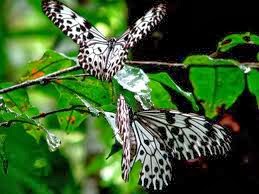Sinharaja Rainforest
 An
incredible 95 percent of Sri Lanka’s endemic bird species are recorded within
the Sinharaja Rainforest. Coupled with the high incidence of endemic plants,
insects and reptiles, this nature reserve is a veritable goldmine for the
ardent nature lover. It is a biodiversity hotspot, and thus has been designated
a UNESCO Biosphere Reserve and a UNESCO World Heritage Site. Of the 26 species
of birds that are endemic to Sri Lanka, all 20 species found in rainforests are
present here. A nature trek or tented safari camp around this nature reserve
will provide you with an experience that can scarcely be matched.
An
incredible 95 percent of Sri Lanka’s endemic bird species are recorded within
the Sinharaja Rainforest. Coupled with the high incidence of endemic plants,
insects and reptiles, this nature reserve is a veritable goldmine for the
ardent nature lover. It is a biodiversity hotspot, and thus has been designated
a UNESCO Biosphere Reserve and a UNESCO World Heritage Site. Of the 26 species
of birds that are endemic to Sri Lanka, all 20 species found in rainforests are
present here. A nature trek or tented safari camp around this nature reserve
will provide you with an experience that can scarcely be matched.
The
wildlife at the Sinharaja Rainforest Sri Lanka
 This
virgin rainforest has become one of Sri Lanka's major ecotourism destinations.
Described as both a Tropical Lowland Rainforest and a Tropical Wet Evergreen
Forest, the Sinharaja is a vast repository of wildlife that is endemic to Sri
Lanka.
This
virgin rainforest has become one of Sri Lanka's major ecotourism destinations.
Described as both a Tropical Lowland Rainforest and a Tropical Wet Evergreen
Forest, the Sinharaja is a vast repository of wildlife that is endemic to Sri
Lanka.
Preliminary
studies on the fauna of Sinharaja have revealed that there is a high degree of
endemism among the butterflies, fish, amphibians, reptiles, birds and mammals.
Of the endemic birds, the rarest to be seen here are the Red Faced Malkoha,
Green Billed Coucal and the Sri Lankan Blue Magpie. Endemism among mammals and
butterflies is also greater than 50 percent.
Flora at the Sinharaja Rainforest, Sri Lanka
The
vegetation in Sinharaja may be described either as a Tropical Lowland Rain
Forest or Tropical Wet Evergreen Forest. Some striking characteristics of the
forest are the loftiness of the dominant trees, the straightness of their
trunks, the abundance of regeneration and the diversity of species. The average
height of the trees varies between 35 to 40 metres. Some trees rise even up to
a staggering 50 metres. The vegetation in Sinharaja is that of a humid wet
evergreen forest with a high degree of endemism. The untapped genetic potential
of Sinharaja flora is enormous; out of the 211 woody trees and lianas so far
identified within the reserve, 139 (66 percent) are endemic to Sri Lanka.
Similarly, high levels of endemism are perhaps true for the lower plants like
ferns, and out of the 25 which are endemic to Sri Lanka, 13 are represented in
the Sinharaja Rainforest. The total vegetation density, including trees,
shrubs, herbs and seedlings has been estimated to be around 240,000 plants per
hectare of which 95 percent comprise those of the ground layer, below one metre
in height.
Reptiles and Amphibians at the Sinharaja Nature Reserve
The
most common reptile is the Green Garden Lizard. The Calotes liolepis an
arboreal species and the rarest of all agamids found on the island. The
only Tortoise recorded on the reserve is the Hard-shelled Terrapin. Among the
snakes, the Green Pit Viper and Hump-nosed Viper are commonly found in this
forest and are endemic to Sri Lanka along with eight others including the
endemic Torrent Toad and the common House Toad. The Wrinkled Frog and the Sri
Lankan Reed Frog are also found in most streams and marshes.
Climate
at the Sinharaja Rainforest
The Sinharaja Rainforest lies
within a rainfall range of 3,000 to 6,000 millimeters annually. The average
temperature ranges between 20°C to 25°C.






